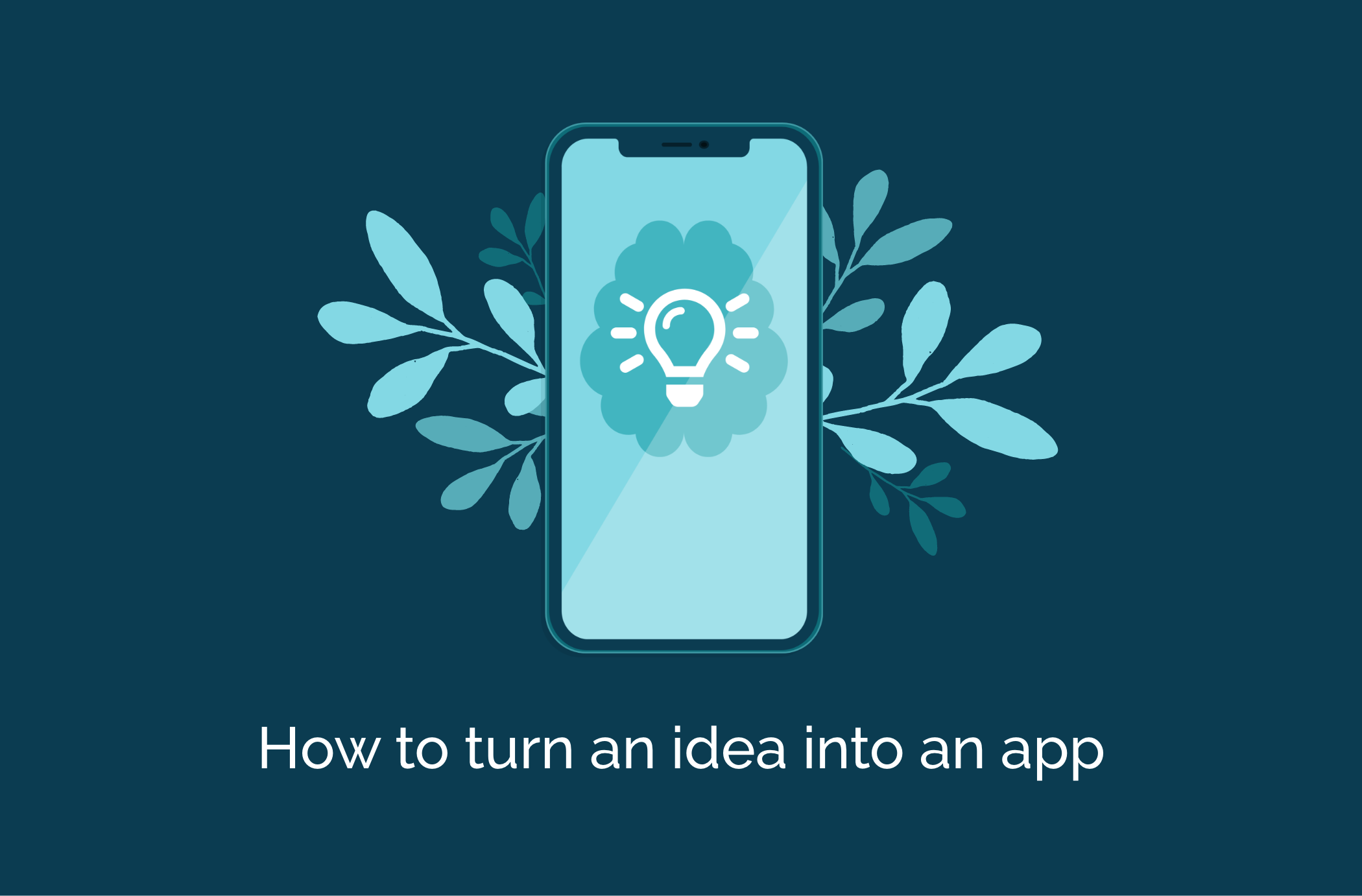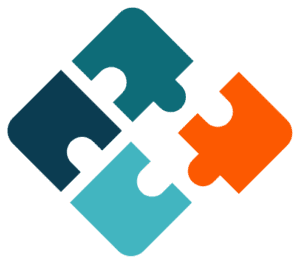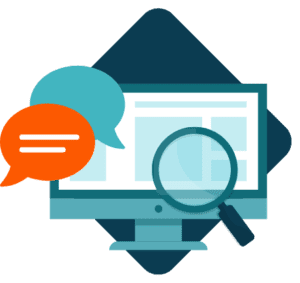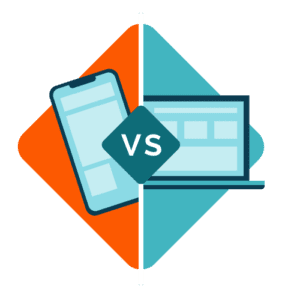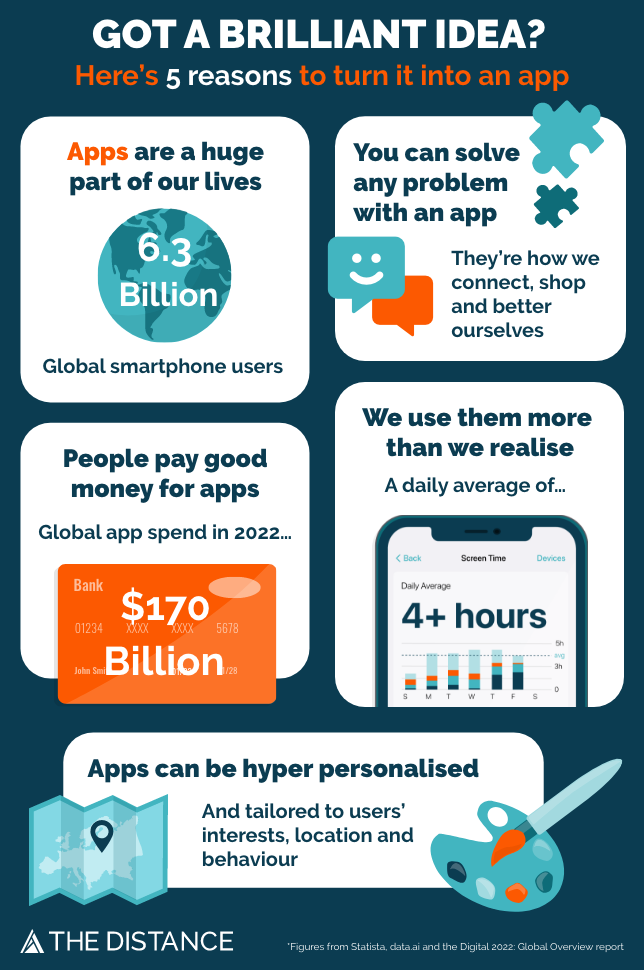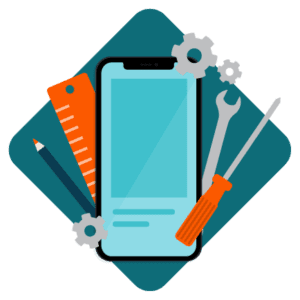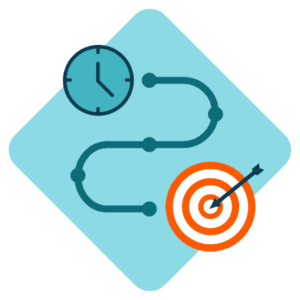So you have an idea; the kind of idea that can absolutely transform the way you do business. One that’s germinating and evolving in your brain with each passing second, sending sparks of excitement through every nerve ending in your body because it’s just. that. good.
But what do you do next? How do you breathe life and colour into that idea and make it something tangible?
Actually, the real question isn’t how do you turn that dream into a reality, but rather how do you do it right? And is the solution an app or something else entirely?
It all starts with identifying the problem
Did you know that Steve Jobs never actually invented anything himself? He wasn’t a technologist. He was an ideas man. An innovator that saw a problem and imagined a solution. And, much like many other leaders, he was interested in improving people’s lives.
So let’s get back to that brilliant idea ruminating in your brain. Most likely, this idea is a solution to a problem. You want to help someone – whether that be your employees, your customers or even the world – but you just don’t know how to turn that idea into a tangible product that can integrate seamlessly into the lives of the people you’re looking to support.
So before you get started, make sure you’re crystal clear on the answer to the following question: What problem will my idea solve and how will it help the user?
Now it’s time to do some research
The digital space is saturated with millions of companies trying to find clever technical solutions to the problems their consumers face. Very few get it right, but when they do, those are the companies that stick with you. Think Uber. Tinder. Deliveroo.
Before you can start developing your product, you have to take the time to get to know your market a bit better. It helps to chunk this phase into a few easy-to-follow steps – because trust us, there’s a lot that goes into research.
Step 1: figure out your target audience
What does your typical user look like and how do they behave? You should think about demographic data like:
- What their average age is
- Are they mostly male? Female? Or a mix of both?
- Where do they live?
- What is their job and how does that impact how they’ll use the product?
- Which devices do they use the most?
- How do they spend their time, both personally and professionally?
Step 2: perform a competitor analysis
Then you need to see what other people are doing in your space. Who are your competitors and how have they attempted to solve this problem?
Once you pinpoint that, take a look at:
- How big or successful these competitors and their products are
- How many downloads they have (if it’s an app)
- What sort of reviews they get
- What the biggest complaints about their product are
- How their product is promoted
- How much they charge users for access to this product
Step 3: determine what will make your product different
If other people are trying to solve this same problem with an app or online tool, why would anyone want to download or use yours over the others? Think about what’s going to make your product unique and make it stand out above the rest. This is your value proposition.
Don’t be afraid to take inspiration from the competition and figure out how you can do what they do, but better.
Should this be an app or something else?
In 2008 the iOS App Store launched with 500 apps. Today, there are over seven million apps across iOS and Android – and 2.2 billion app downloads a year in the UK alone. That’s because apps are such a fundamental part of how we live our lives. We use them to work, to learn, to date, to connect and to better ourselves.
But an app is not the right solution for every business. Sometimes, having a mobile website will work just fine. In a perfect world, you’d have both. But that’s not always possible logistically.
If you think your user will interact with your product several times a day or be more likely to use it on the go, an app is much better. Once it’s installed, it’s easy to access and you can keep their data up to date. But an app is often more expensive to build than a website and you have to maintain it to ensure the functionality runs smoothly.
A website, on the other hand, can run on desktops, which means you don’t need a phone to access it. But it doesn’t have the same personalisation and user focus.
During your research phase, it will help to look at things like:
- Which of the two options your target market prefers
- If you think your user will want to access your product offline
- What your competitors are doing and how you can improve the product if you went with the opposite option
It’s time to start planning.
No doubt you’ll have learned a lot during the research period – in fact, your idea will probably have morphed and evolved a few times based on what you now know is possible. So before the scope creep gets out of control, it’s important to build out your project plan.
Let’s say you do decide to go the app route. How do you get the rest of your leadership team on board? You’ve already done the research, now you just need to plot things out.
Building an app is a long journey that requires a lot of careful planning – and creating a clear plan helps minimise risk.
You’ll want to look at things like:
- Project timelines – When are you hoping to have a minimum viable product (MVP) to market?
- Budgets – How much do you want to spend on development? Marketing? General app maintenance?
- Marketing strategy – How will you get your app in front of the right customers?
- Monetisation strategies – How will this app generate revenue for your business? Will you have a subscription model? In-app purchases? In-app advertising?
Who’s best suited to develop it?
You’ve got a few options here. You could outsource to a team of freelancers, invest in a no-code app builder, create your own in-house team or work with an agency.
The last two are probably the most common, so let’s focus on those.
Option 1: building an in-house team
When you have your own developers, you interact with them every day and integrate them into your business culture.
But this method has a lot of downsides. First of all, hiring is expensive. It’s not just a case of bringing in one or two people to get the job done. You may need multiple frontend and backend developers, a user experience (UX) and user interface (UI) designer, a business analyst, product owner and lots of testers.
You’ll also need an expert in your management team who understands the development process. Otherwise, you’ll have difficulty hiring the right people, creating briefs and managing their day-to-day.
Option 2: going with an agency
When you work with an agency, you have access to a diverse pool of experts. Plus they have loads of experience to draw from, knowing what works and what doesn’t.
They’ll take control of the entire project from start to finish, managing everything from discovery and ideation to design, development and testing. They can even monitor app performance and reviews and help you maintain the quality of the app over time.
Of course, the biggest downside of going the agency route is the cost and the time involved. In fact, this is where a lot of agencies get a bad rep. It could take anywhere from 6-12 months to release the final product. And if you work with the wrong agency, you could feel like you’re being cut out of the process.
That’s why it’s so important to find the right agency partner – one that works with you not just for you.
At The Distance, we make a point to fully immerse ourselves in our partners’ industries to better understand the product we’re developing. And we collaborate closely with you throughout the entire discovery phase. That way, we’re not only getting to know what you need, but we’re ensuring you’re kept up-to-date with everything that’s happening.
Let’s talk a minute about the discovery phase (and why it’s so important)
We’re going to make another assumption now and imagine you decided to go with an agency. So how do you go about finding the right partner?
Some agencies will do exactly what you ask for and that’s great. But isn’t it better to find someone who takes the time to collaborate and work with you to figure out the best route towards achieving your goals?
That’s why the discovery process is so vital. We really emphasise the importance of having a collaborative discovery phase that gives us the chance to get to know you and your business. Our discovery consists of five key stages:
- Running a full-day workshop to dig deeper into your business, industry and requirements
- Preparing wireframes for your customer journeys
- Building a design concept based on your brand and visual preferences
- Crafting an in-depth features document that covers everything you need to know about your app
- Drafting the final designs for approval
That way, we’ve not only covered all the bases but we’ve also had the time to build a personal relationship with you. And we’ve made sure to discuss absolutely everything related to your app so nothing is missed out early on.
Some agencies do this process a bit differently, but we believe it’s important to get the most out of your idea and make sure the final product (and the overall journey) exceeds all expectations.
From there, it’s back to you
The app is now ready for launch, so it’s time for you to kick off that marketing plan you put together and get it out there.
Once you hit publish on the app store, it’s just the beginning of a whole new exciting adventure for your business. So pay attention to reviews, respond to customer feedback, fix the bugs and always be evolving your product.
And don’t forget to measure (and celebrate) your success! You accomplished a massive feat and you should be proud of that.
Think you’re ready to take that idea to the next level? Get in touch to find out how we can help.
